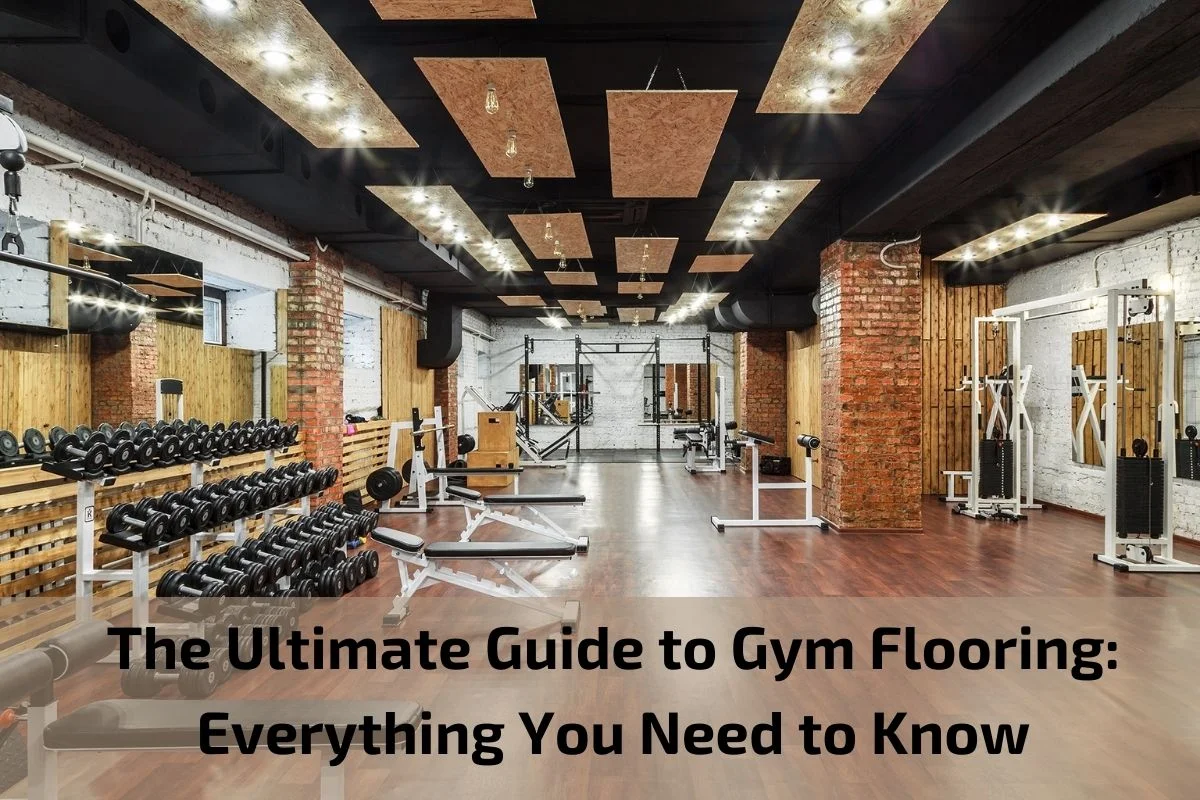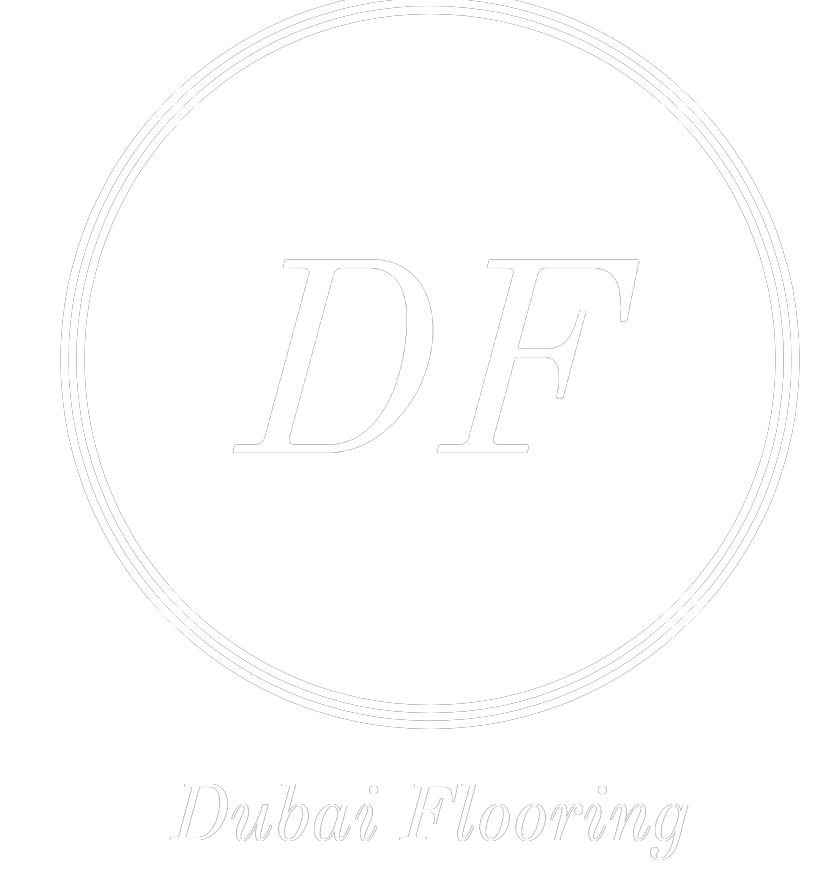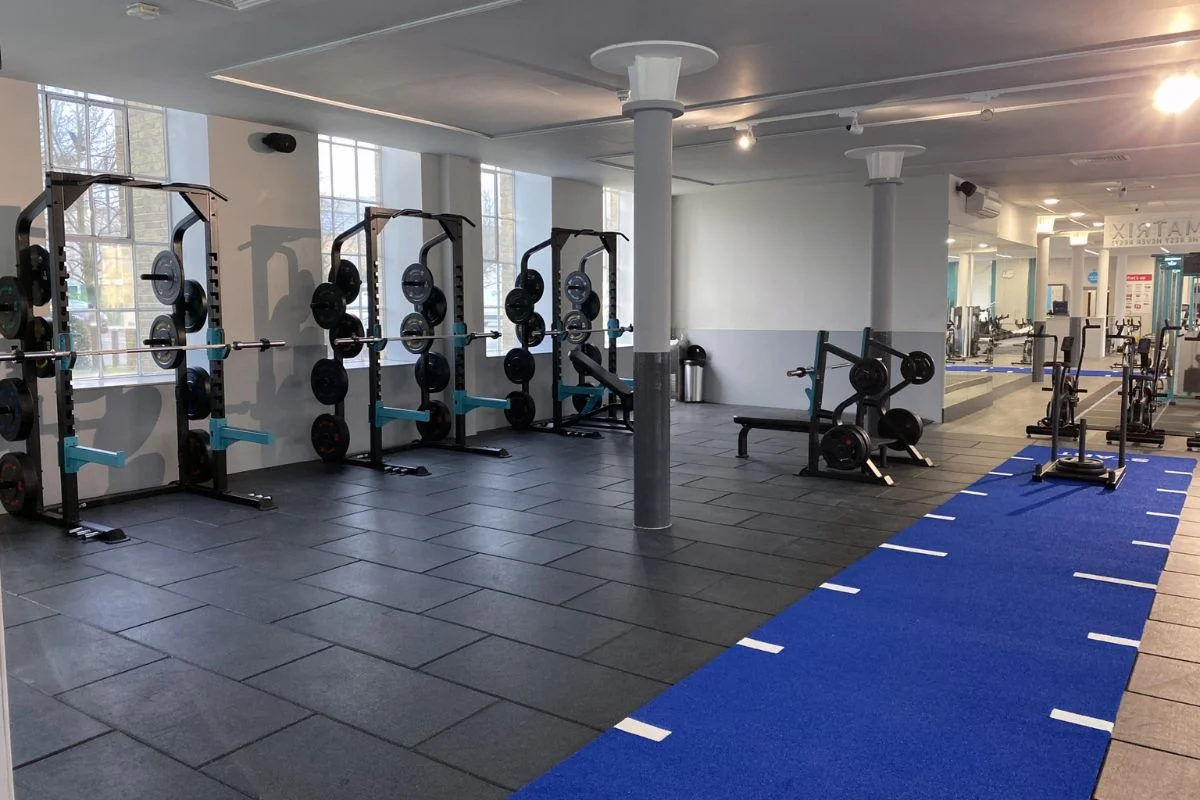Blog
 Welcome to “The Ultimate Guide to Gym Flooring: Everything You Need to Know.” Whether you’re setting up a home gym, renovating a commercial fitness center, or designing a sports facility, choosing the right flooring is essential for creating a safe, functional, and inviting workout space.
Gym flooring plays a crucial role in providing support, stability, and traction during workouts, protecting both equipment and athletes from damage and injury. With a wide variety of materials, designs, and installation methods available, navigating the world of gym flooring can feel overwhelming.
Welcome to “The Ultimate Guide to Gym Flooring: Everything You Need to Know.” Whether you’re setting up a home gym, renovating a commercial fitness center, or designing a sports facility, choosing the right flooring is essential for creating a safe, functional, and inviting workout space.
Gym flooring plays a crucial role in providing support, stability, and traction during workouts, protecting both equipment and athletes from damage and injury. With a wide variety of materials, designs, and installation methods available, navigating the world of gym flooring can feel overwhelming.
Definition and purpose of Gym Flooring
Gym flooring refers to specialized flooring materials designed specifically for use in fitness facilities, workout areas, and exercise spaces. It serves several essential purposes that contribute to the functionality, safety, and aesthetics of the gym environment.
Support and Stability: Gym flooring provides a stable and supportive surface for various types of physical activities, including weightlifting, cardio exercises, and group fitness classes. It helps to minimize the risk of injuries by offering a firm and level foundation for movement and exercise.
Shock Absorption: One of the primary purposes of gym flooring is to absorb shock and impact during workouts. High-impact activities such as jumping, running, and weightlifting can exert significant force on the body and joints. Gym flooring with shock-absorbing properties helps to reduce strain and minimize the risk of injuries, such as joint pain and stress fractures.
Traction and Grip: Gym flooring is designed to provide traction and grip, preventing slips and falls during workouts. The surface texture and material composition of gym flooring enhance traction, allowing athletes and fitness enthusiasts to maintain stability and control during dynamic movements and exercises.
Noise Reduction: Gym flooring helps to dampen noise and minimize sound transmission, creating a more conducive and comfortable workout environment. The impact of weights, equipment, and footsteps can generate noise that may disturb other gym users or neighboring spaces. Proper gym flooring absorbs sound vibrations, reducing noise levels and creating a quieter atmosphere.
Protection of Subfloor: Gym flooring acts as a protective layer for the subfloor, safeguarding it against damage from heavy equipment, dropped weights, and repetitive impact. It helps to extend the lifespan of the subfloor and prevents structural damage, such as cracks and indentations.
Aesthetic Enhancement: Beyond its functional benefits, gym flooring also contributes to the overall aesthetics and design of the fitness space. With a wide range of colors, patterns, and textures available, gym flooring can complement the interior decor, brand identity, and atmosphere of the gym, creating an inviting and motivating environment for users.
Importance of choosing the right gym flooring
The importance of choosing the right gym flooring cannot be overstated when it comes to creating a safe, functional, and inviting workout environment. Here’s why selecting the appropriate gym flooring is crucial:
Safety: Proper gym flooring helps prevent slips, trips, and falls by providing adequate traction and grip during workouts. It reduces the risk of injuries caused by accidental falls or mishaps, ensuring the well-being of gym users.
Impact Absorption: The right gym flooring absorbs impact from heavy equipment, weights, and dynamic movements, minimizing strain on joints and muscles. It helps prevent fatigue, discomfort, and overuse injuries by providing cushioning and support.
Durability: Quality gym flooring is built to withstand the demands of high-traffic areas and intense workouts. It resists wear, tear, and compression, maintaining its integrity and performance over time. Durable flooring ensures long-term reliability and minimizes the need for frequent replacements or repairs.
Hygiene and Cleanliness: Gym flooring that is easy to clean and maintain promotes hygiene and cleanliness in the workout environment. It prevents the buildup of dirt, sweat, and bacteria, reducing the risk of infections and promoting a healthy atmosphere for gym users.
Aesthetic Appeal: The right gym flooring enhances the overall aesthetics and ambiance of the fitness space. It contributes to the branding, identity, and atmosphere of the gym, creating an inviting and motivating environment for members and visitors.
Functional Adaptability: Different areas of the gym may require specific types of flooring to accommodate various workout activities and equipment. Choosing the right flooring material for each area ensures optimal functionality and performance, whether it’s for cardio zones, weightlifting areas, or group fitness studios.
Noise Reduction: Quality gym flooring helps dampen noise and vibrations generated by equipment and foot traffic. It creates a quieter and more conducive workout environment, minimizing disruptions and distractions for gym users and neighboring spaces.
Long-Term Investment: Investing in the right gym flooring is a long-term investment in the success and sustainability of the fitness facility. It demonstrates a commitment to safety, professionalism, and customer satisfaction, enhancing the reputation and value of the gym in the eyes of members and visitors
Types of Gym Flooring
Rubber Flooring:
- Rubber flooring is one of the most popular choices for gym environments due to its durability, shock absorption, and resilience.
- It provides excellent traction and grip, making it suitable for high-traffic areas and heavy equipment zones.
- Rubber flooring comes in various thicknesses and textures to accommodate different workout intensities and preferences.
- It is highly resistant to moisture, chemicals, and stains, making it easy to clean and maintain.
- Foam flooring, often made of EVA (ethylene-vinyl acetate) or PE (polyethylene), offers cushioning and comfort for floor exercises, yoga, and stretching areas.
- It is lightweight, portable, and easy to install, making it ideal for temporary or home gym setups.
- Foam flooring comes in interlocking tiles or rolls, providing flexibility in design and layout.
- While not as durable as rubber flooring, foam flooring offers sufficient shock absorption for low-impact activities.
- Vinyl flooring, also known as PVC (polyvinyl chloride) flooring, is a versatile option suitable for gyms, fitness studios, and multipurpose spaces.
- It is available in sheet, tile, or plank formats, offering a wide range of design options, including wood, stone, and abstract patterns.
- Vinyl flooring is durable, water-resistant, and easy to clean, making it suitable for areas with high moisture levels.
- It provides good traction and stability for various workout activities while offering a comfortable underfoot feel.
- Carpet tiles offer a softer and warmer alternative to traditional hard surface gym flooring.
- They provide thermal insulation, noise reduction, and added comfort for floor exercises and stretching routines.
- Carpet tiles come in a variety of colors, patterns, and pile heights, allowing for customization and design flexibility.
- While not as water-resistant as other flooring options, carpet tiles offer excellent traction and slip resistance.
- Interlocking tiles, typically made of rubber or foam, are modular flooring systems that connect like puzzle pieces.
- They offer quick and easy installation without the need for adhesives or special tools.
- Interlocking tiles come in various materials, thicknesses, and surface textures to accommodate different fitness activities and preferences.
- They provide cushioning, shock absorption, and stability for weightlifting areas, functional training zones, and cardio spaces.
Benefits of Quality Gym Flooring
Safety: Quality gym flooring provides a safe workout environment by offering excellent traction, grip, and stability. It helps prevent slips, trips, and falls during exercises, reducing the risk of injuries among gym users.
Shock Absorption: High-quality gym flooring absorbs impact and shock from heavy equipment, weights, and dynamic movements. It helps minimize stress on joints, muscles, and connective tissues, reducing the risk of fatigue and injury during workouts.
Durability: Quality gym flooring is built to withstand the rigors of daily use and high-traffic areas. It is resistant to wear, tear, and compression, ensuring long-lasting performance and maintaining its integrity over time.
Noise Reduction: Gym flooring with sound-dampening properties helps reduce noise and vibrations generated by equipment, weights, and footsteps. It creates a quieter and more conducive workout environment, minimizing disruptions and distractions for gym users and neighboring spaces.
Easy Maintenance: High-quality gym flooring is easy to clean and maintain, requiring minimal effort and resources to keep it looking its best. Regular sweeping, vacuuming, and occasional mopping are usually all that’s needed to remove dirt, dust, and debris.
Versatility: Quality gym flooring is versatile and adaptable to a variety of fitness activities and training modalities. Whether it’s weightlifting, cardio exercises, functional training, or group fitness classes, quality flooring can accommodate diverse workout routines and equipment setups.
Aesthetic Appeal: Quality gym flooring enhances the overall aesthetics and ambiance of the fitness space. With a wide range of colors, patterns, and textures available, gym flooring can complement the interior decor, branding, and atmosphere of the gym, creating an inviting and motivating environment for gym users.
Brand Image: Investing in quality gym flooring reflects positively on the gym’s brand image and reputation. It demonstrates a commitment to safety, professionalism, and customer satisfaction, attracting and retaining members who prioritize quality and excellence in their fitness experience.
Maintenance and Care Tips for Gym Flooring
Maintenance and Care Tips for Gym Flooring:
Regular Cleaning Routine:
- Establish a regular cleaning schedule for gym flooring to remove dirt, dust, and debris.
- Sweep or vacuum the flooring surface daily to prevent buildup and maintain cleanliness.
- Promptly clean up spills and stains to prevent them from setting into the flooring material.
- Use a damp cloth or mop with mild detergent to spot clean affected areas.
- Use pH-neutral or mild cleaning solutions specifically formulated for gym flooring.
- Avoid harsh chemicals, bleach, ammonia, or abrasive cleaners that may damage or discolor the flooring surface.
- Minimize exposure to moisture and water on gym flooring, especially in areas prone to spills or sweat accumulation.
- Wipe down equipment and mats after use to prevent moisture from seeping into the flooring material.
- Place protective mats or pads under heavy equipment, weight benches, and exercise machines to prevent scratches and abrasions.
- Use furniture sliders or pads under movable furniture to prevent dragging and scratching the flooring surface.
- Conduct regular inspections of gym flooring to identify any signs of wear, damage, or deterioration.
- Look for areas of uneven wear, cracks, tears, or loose tiles that may require repair or replacement.
- Address any damaged or worn areas of gym flooring promptly to prevent further deterioration.
- Replace damaged tiles or sections of flooring as needed to maintain the integrity and safety of the gym environment.
- Minimize direct sunlight exposure to gym flooring to prevent fading, discoloration, and heat damage.
- Use window coverings or UV-resistant window film to protect flooring surfaces from prolonged sun exposure.
- Place entrance mats or shoe trays at entry points to capture dirt, debris, and moisture before it enters the gym area.
- Regularly clean and maintain entrance mats to prevent buildup and ensure effective dirt removal.
- Refer to the manufacturer’s guidelines and recommendations for specific care and maintenance instructions for your gym flooring material.
- Follow the manufacturer’s instructions for cleaning products, equipment, and techniques to avoid voiding warranties or causing damage.
Conclusion
In conclusion, maintaining high-quality gym flooring is essential for creating a safe, functional, and inviting workout environment. By implementing a regular cleaning routine, addressing spills and stains promptly, and protecting against damage and wear, gym owners and facility managers can prolong the lifespan and performance of their flooring investment.




